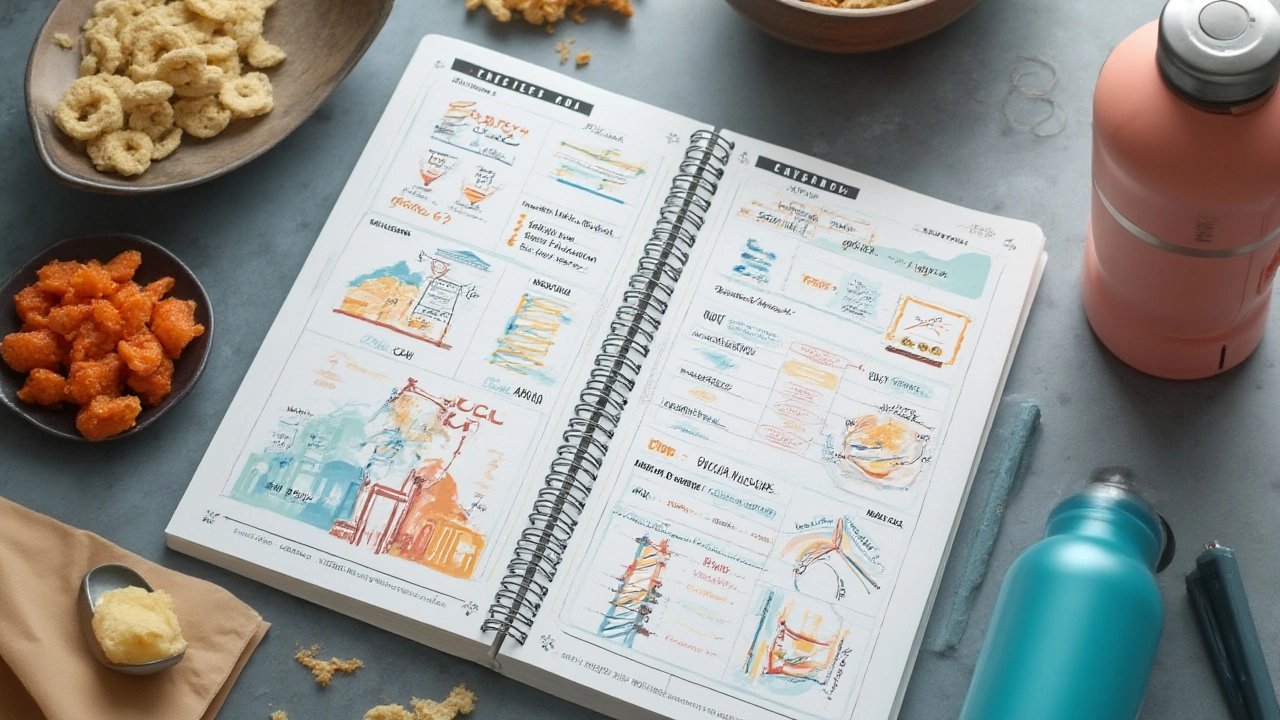If you’ve ever hit the gym, pushed through an intense set, then wondered why your muscles aren’t just blowing up overnight, you’ve probably asked yourself—am I missing something? There’s a lot of noise about fancy powders and potions, but not all supplements are built the same. BCAAs might look like another acronym on a crowded shelf, but these amino acids hold legit science-backed secrets to muscle growth, faster recovery, and energy you can actually feel. Ready to break through that stubborn plateau? Let’s decode what makes BCAAs the real deal for your strength journey.
What Are BCAAs, Really?
Okay, so you see “BCAA” everywhere in the gym section, but what are they beyond the hype? BCAA stands for Branched-Chain Amino Acids. There are three: leucine, isoleucine, and valine. Your body doesn’t make them; you need to get them from food or supplements. These aren’t just any amino acids—they’re the heavy lifters for muscle building, making up about 35% of the essential amino acids in muscle proteins.
Let’s paint a picture. Proteins are like words and amino acids are the letters. But BCAAs? They’re the letters that make up all the cool action words—run, jump, grow. When you train hard, muscle fibers get tiny tears. BCAAs fuel the repair system, helping muscles rebuild stronger. Leucine, for example, actually flips the switch in your cells to start muscle repair. Isoleucine brings in the glucose, so your muscles don’t feel like jelly halfway through your session. Valine battles muscle fatigue, making those late-set reps suck just a tiny bit less.
Can you just eat a steak and be done with it? Sure—sort of. Whole protein is great, but BCAAs zip right to your muscles, ready for business. They don’t get slowed down in your liver; they’re available almost instantly. That’s why so many athletes grab them before, during, or after workouts as a quick-hit boost.
Different folks react differently, but some studies show people supplementing BCAAs experienced up to 33% less muscle soreness after heavy exercise. That’s not some vague “feels better”—that’s a solid benefit if you hate hobbling up the stairs after leg day.
If you’re eating plenty of complete proteins, you’re getting BCAAs naturally. But most of us are either too busy or just can’t stomach five chicken breasts a day. Supplements make it easier—you mix, you sip, you recover.
BCAAs and Muscle Building: How It Actually Works
Here’s where people get tripped up—you don’t pop a BCAA pill and wake up shredded. These amino acids work behind the scenes, activating the process called muscle protein synthesis. Leucine is the star player here; think of it like the manager who tells your muscles to clock in and start building new tissue. A 2017 review published in the Journal of the International Society of Sports Nutrition points out that taking BCAAs can help activate this process, especially when you’re short on high-quality protein in your diet.
But, this isn’t magic. You still need enough total protein and intense resistance training. BCAAs are like adding rocket fuel to a car. If you never turn the key (train), nothing happens. But when you’re lifting, running, or cycling, BCAAs can up the efficiency of how your body rebuilds.
Check this fact: one classic clinical trial showed athletes who consistently took BCAAs during a strength-training program not only gained more lean mass but also had less muscle breakdown markers in their blood. That’s two wins for the price of one supplement.
If you’ve ever worried about training fasted (like those early morning classes), BCAAs help ward off the dreaded muscle loss by supplying an energy source for working muscles. That’s why some people sip them during cardio to hold onto gains while they burn fat.
Here’s a quick stats table showing what’s inside a typical 10g BCAA serving:
| BCAA | Amount (g) | Key Benefit |
|---|---|---|
| Leucine | 5 | Starts muscle growth |
| Isoleucine | 2.5 | Boosts energy, helps recovery |
| Valine | 2.5 | Reduces fatigue, supports tissue repair |
A common ratio is 2:1:1 for leucine, isoleucine, and valine. Watch for this ratio on labels, since more leucine isn’t always better—balance matters for maximum effect.

Should You Add BCAAs To Your Fitness Plan?
On paper, BCAAs sound perfect, right? But honest question—should everyone use them? If you’re new to lifting, or only do the occasional yoga class, solid meals will get you far. But for regular lifters, endurance folks, or busy types who snag sketchy lunches, BCAAs act like backup support. Getting the dose right is important. Most studies suggest 5-10 grams before or after workouts. More isn’t always better (no need to gulp 50 grams), but consistency is key.
A little tip: I used to only grab a generic whey shake after workouts. Then I started adding BCAAs to my water bottle during my toughest sessions—deadlifts and squats, mostly. I noticed less fatigue and less next-day limping. Leonard, my husband and toughest critic, actually admitted he could get through his evening runs without walking (“I’m not getting younger!” he likes to remind me every single time).
- If you’re vegan or vegetarian, BCAA supplements are a safe, animal-free way to get these essentials without piling on extra food volume.
- BCAAs have basically no calories (unless sweeteners are added), so they fit into most nutrition plans.
- Some brands add electrolytes or vitamins but always check the label. Some products are basically fruit punch with a sprinkle of aminos.
One real-world study tracked elite rowers across a brutal season. The group using BCAAs not only hit better performance numbers, but had fewer days off sick. The connection? BCAAs might reduce exercise-induced immune suppression, which is nerd-speak for “less likely to catch a cold during hard training.”
Be realistic. If your diet’s dialed in, and you’re getting enough protein, BCAAs can be the finishing touch—not the fix for bad eating or lazy workouts.
Tips for Choosing and Using BCAA Supplements
When you walk into any supplement shop, the BCAA wall looks like a rainbow got into a turf war. Some smell like gummy bears, some like cough syrup. How do you pick?
- Look for a 2:1:1 ratio. More leucine isn’t always better, but too little won’t do much either.
- Check if it’s tested for quality by a third party like NSF or Informed-Sport, so you’re getting what’s actually on the label—no bathtub concoctions.
- Mixability matters. If it clumps or tastes like sand, you won’t use it often. Sample sizes or single-serve sachets are an easy test run.
- Steer clear of sugar-loaded options. Sweetener gets you nowhere; you want those amino acids.
- Respect caffeine content—some blends have it added for extra kick, but late-night gym sessions plus a jittery powder aren’t a great match.
Timing? Most studies suggest before, during, or right after workouts yields the most benefits. If you’re training fasted or doubling up sessions in a day, consider splitting your serving. Don’t skip food, but see BCAAs as reinforcements—never your entire game plan. People with certain medical conditions (like ALS or maple syrup urine disease, yes, that’s a thing) should consult a doctor before trying BCAA supplements. And pregnant or nursing? Better to play it safe.
The real key is how you feel. Notice if you recover faster, feel less wiped out, or see steady strength gains. That’s your sign to stick with it. If you’re not impressed after a month, switch brands or focus on whole foods. Results will always be personal—you can’t force it with any one powder.

Food vs. Supplements: Finding What Works for You
It’s easy to get sucked into thinking every supplement is a magic fix, but food foundations matter. Chicken, eggs, Greek yogurt, cottage cheese, tofu, and tempeh? All loaded with BCAAs. If you’re already smashing your protein goal, that’s the main thing. BCAAs aren’t your meal—they’re the spark plugs. For plant-based eaters, supplements fill gaps without needing giant servings of beans or soy at every meal.
Here’s an interesting detail: if you’re cutting calories or training twice a day (hello, marathon season), energy runs low. That’s when BCAAs can really shine. They help muscle growth, but also curb breakdown when you’re running on empty. Some folks use them during intermittent fasting windows to protect muscle but still honor strict fasting rules.
Still, no supplement erases bad habits. You need sleep, good food, smart training, and planned rest. BCAAs can amplify your progress, but not if you’re living on soda and sitting all day.
- Add BCAAs if you’re often sore, tired, or pushing harder than before.
- Try a small tub at first; see how your body responds over a few weeks.
- Adjust based on taste, convenience, and whether you’re really seeing results—it shouldn't feel forced.
Just remember: the muscle growth game is about the boring stuff you do daily—showing up, eating well, recovering often, and only then, choosing smart supplements.


10 Comments
Nicole Carpentier
I started taking BCAAs last year after my knee surgery and honestly? My recovery time cut in half. No more limping up the stairs. I mix mine with water and a splash of lemon. Simple. Effective.
Also, I’m vegan so this was a game changer. No more feeling like I’m missing out on gains.
Hadrian D'Souza
Oh wow. Another person who thinks swallowing amino acids is the secret to muscle growth. Let me guess-you also drink celery juice and meditate with crystals before deadlifts?
Bro, if you need BCAAs to feel less sore, maybe you’re lifting like a confused squirrel with a weight vest. Eat real food. Train hard. Stop buying liquid glitter.
Brandon Benzi
This whole BCAA thing is just another way for big pharma to make Americans pay for what they could get from a $3 can of tuna. We used to build muscle on eggs and milk. Now we need a $40 powder that tastes like expired bubblegum.
It’s not progress. It’s weakness.
Abhay Chitnis
Bro i tried bcaas for 2 weeks and felt nothing 😑
my uncle in delhi lifts 100kg with bare hands and eats roti-sabzi daily. no supplements. no gym. just hard work.
maybe we overthink this? 🤷♂️
Robert Spiece
You call this science? Leucine flips a switch? That’s not biochemistry-that’s a Marvel movie script.
Let’s not pretend that a chemical compound can override the basic law of energy balance. If you’re not eating enough protein, no amount of leucine will make your muscles grow.
And if you are? Then you’re just paying for a placebo with flavoring.
It’s capitalism disguised as fitness. We’re not training-we’re branding our bodies.
Vivian Quinones
I don’t need fancy powders. I eat chicken. I lift. I sleep. That’s it. America’s obsessed with shortcuts. You want big muscles? Work for it. Not buy it.
My grandma came from the old country. She never heard of BCAAs. She lived to 92 and carried firewood. What’s your excuse?
Eric Pelletier
Let’s get technical for a second-BCAAs bypass hepatic metabolism and enter systemic circulation directly via the portal vein, which is why they’re effective pre- and intra-workout.
Leucine activates mTORC1 via the Rag GTPase pathway, which upregulates ribosomal biogenesis and protein synthesis.
But here’s the kicker: if your total daily protein intake is below 1.6g/kg of bodyweight, BCAAs alone won’t do squat. They’re synergistic, not standalone.
Also, the 2:1:1 ratio is optimal because isoleucine enhances glucose uptake while valine competes with tryptophan across the BBB, reducing central fatigue.
Don’t just buy a flavor-buy a formulation backed by stoichiometry.
Marshall Pope
i used to think bcaas were just hype til i started taking em during my 5am runs. no more crashing halfway.
my water tastes like candy now but hey, i dont care. its worth it.
ps: dont buy the ones with caffeine. trust me.
Nonie Rebollido
I tried them once. Tasted like sour candy water. Didn’t notice anything different.
Still lift. Still eat tofu. Still feel fine.
Maybe I’m just lucky? 🌿
Agha Nugraha
I use BCAAs only on heavy leg days. Not every day. Just when I know I’m going to be wrecked.
Works for me. Not a magic pill. Just a little help.
And I always check the label-no sugar, no nonsense. Simple is better.